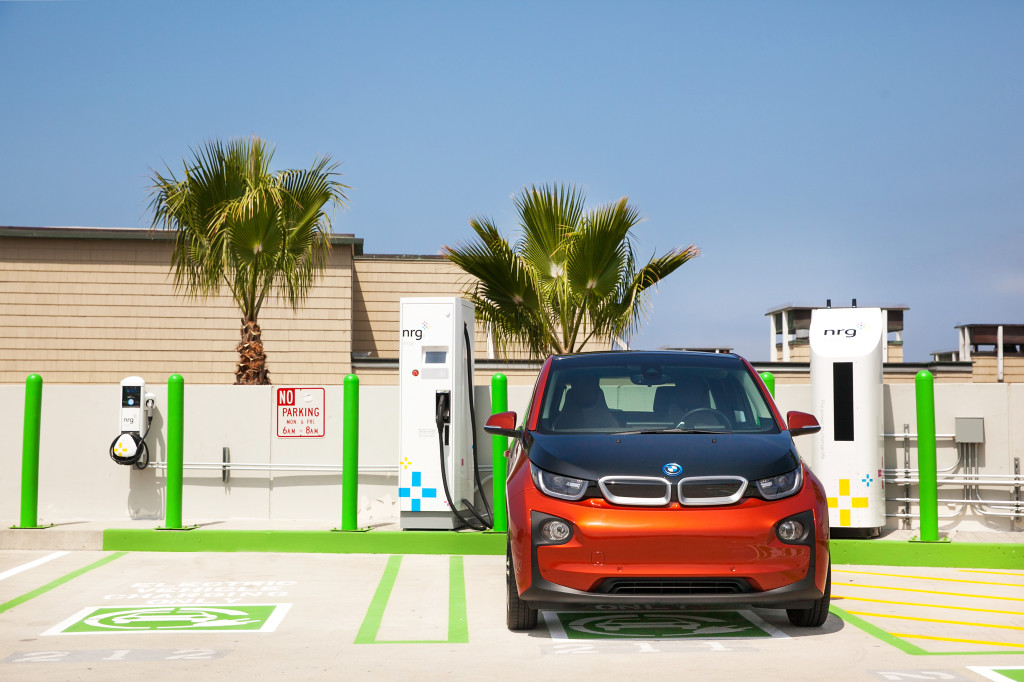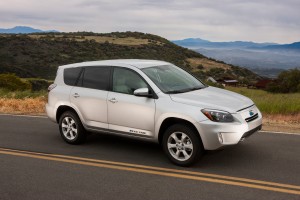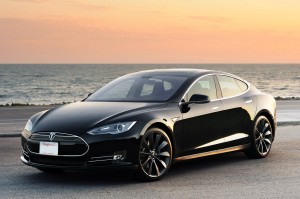The attacks in Paris on Friday were another reminder of the threat that Middle Eastern instability poses to the rest of the world. The news affected me more than the usual foreign event, since I was just in Paris for an electric vehicle conference last December and am planning to attend the United Nations conference on climate change there in just a few weeks.
I’m struck by the similarities to 9/11 in the United States, in terms of the willingness of many in France and the United States to retaliate militarily in the Middle East. As an example, France just launched a big bombing assault yesterday on an ISIS stronghold in Syria.
I can certainly relate to the impulse to retaliate, but it seems that most of the political chatter now is about our military intervention options in response to the attacks, from large-scale to targeted.
But no one seems to be discussing with any seriousness another option: divest from the Middle East. And by divestment, I mean stop investing in the economies of that region, specifically in oil. Fortunately, we have an existing technology that can help with this effort: electric vehicles.
I ran some numbers on the cost of large-scale war versus the cost of investing in electric vehicles, and the results are pretty staggering. The Iraq War, as a point of comparison for a large-scale military effort, will end up costing the United States over $2 trillion dollars (and the war in Afghanistan is estimated to cost $1 trillion). If you assume an electric vehicle costs $30,000 (the price of a Nissan LEAF after incentives), that’s enough money to buy over 66.7 million electric vehicles, or one for every two households in America — and many households in urban areas may not even have a car. Assuming that each of these vehicles displace 10,000 driving miles on gas per year at 25 miles per gallon, that could save 26.7 billion gallons of gasoline annually, or almost a quarter of United States annual consumption.
Of course, if the United States government (and other willing governments around the world) actually bought that many electric vehicles, the cost of the vehicles would fall dramatically with the economies of scale, so these figures are quite conservative.
The result of this huge decrease in demand for oil would be the economic collapse of many petro-states around the world, including some parts of the United States, like Texas. Middle Eastern countries would have to find different industries to gain their wealth and would be hard-pressed to support terrorism financially. Meanwhile, for the United States, the region would no longer be of strategic importance to us and could be left to sort out its own problems without American lives on the line. And of course the investment in electric vehicles would not only bolster our domestic economy and electric utilities, it would clean our air and stabilize our global climate.
All in all, electric vehicles as a response to Middle Eastern terrorism seems like an important option to consider, if our leaders are willing to do so.
Companies like Nissan and maybe General Motors have moved quickly and aggressively to build electric vehicles. But so far they seem to be the exception. Most big automakers have proceeded cautiously, or in some cases they have worked to obstruct progress on battery electrics through their lobbying efforts.
Why the resistance? Particularly when battery electrics offer a better driving performance and economically are going to be cost-competitive with internal combustion engines in the next decade or so?
Mike Barnard at Clean Technica offers a detailed and interesting read explaining the institutional barriers at these companies that prevent innovation from happening. First and foremost is what they would lose:
[T]o make a good electric car you have to start from the ground up and throw a bunch of stuff away:
- You have to throw away your frames. All of them. To build an effective, long-range, high-performing electric car, you have to start with something like the Tesla power slab at or below the level of the axles.
- You have to throw away all of your engine management software. All of the experience built up on eking amazing compromises out of an internal combustion engine is irrelevant when faced with an AC or DC motor.
- You have to throw away your internal combustion motor. No hybrid, serial hybrid, range extender BS. You have to throw it away. And start with the assumption that you are going to achieve range, fast charging, and performance by committing to electric motors and batteries.
- You have to throw away all of your mechanical steering and control systems. Everything is drive-by-wire. Anything else is a waste of space, weight, and time. All of those experienced engineers, all of those solutions that worked, gone. They all assume frames that you don’t have any more, and specific areas for mechanical linkages which are no longer there.
- You have to throw away all of your traction control systems. They are all designed around the ludicrously varying power output of an internal combustion engine, which changes literally every microsecond at every change of speed and driver input because those engines have such narrow power bands. Instead, you can rely on tremendously straightforward power to your wheels which is much more finely controllable. Your actual traction control results will be much better, but all of the hacks you built up will be useless.
- You have to throw away all of your emission controls experience and knowledge and technology and investments and branding. It’s completely unnecessary.
- You have to throw away your entire fuel storage and delivery system. The tank, the lines, the pumps, the injection systems, all of it. It’s all obsolete.
- You have to throw away your body panels. They all depend on the frame and the gas tank and the mechanical linkages taking up space that they don’t take up anymore.
- You have to throw away your seat mounting systems, and possibly your seats. They expect a lot of wasted space due to motor and transmission drive shaft hump and gas tank that just aren’t there anymore. They depend on a frame which doesn’t exist anymore.
Basically, these companies and their engineers would lose a lot of jobs and expertise to gamble on a new technology. It’s a classic case study in innovation and large companies. With Tesla and soon Apple and Google and others moving into this space, Big Auto could face some major turmoil if they don’t adapt soon.
Yesterday I drove my 85-mile range Nissan LEAF about 50 miles to a destination and decided to fast-charge it there for the return trip. I checked Plugshare.com and found an eVgo fast-charge station (their “Freedom Station”), relatively conveniently located at a mall near my destination. Here’s what a typical one looks like:
 You may recall that eVgo (really energy company NRG) got into this charging game as a “punishment” for having defrauded ratepayers with rolling blackouts in the early part of the last decade. The settlement with the state called for the company to spend $100 million in charging infrastructure, but the company has not been able to deliver and is now subject to a California Public Utilities Commission audit to determine what’s going wrong.
You may recall that eVgo (really energy company NRG) got into this charging game as a “punishment” for having defrauded ratepayers with rolling blackouts in the early part of the last decade. The settlement with the state called for the company to spend $100 million in charging infrastructure, but the company has not been able to deliver and is now subject to a California Public Utilities Commission audit to determine what’s going wrong.
Now in my case yesterday I found that there was in fact a station I could access. When I got there, I was pleased with two things: first, the charger was unoccupied, and second, it was actually working.
But here’s where eVgo and its state overlords need improvement. First, there’s no easy way to pay if you’re not part of the eVgo “network” — a monthly subscription service. Otherwise, you have to call a 1-800 number and then work your way to a person to manually take down your credit card number like it’s 1995.
Could you imagine the same setup if you went to a gas station? What if you couldn’t fill up your car at Chevron unless you were a “member”, or else you’d have to jump through hoops? Solution: make it simple. Let drivers simply swipe their credit card and be done with it. Ditch these bogus “network” plan requirements.
Second, the pricing. I was informed by the customer service rep taking my credit card that it would be a flat $10 charge. I only needed an additional 40% charge though to get back home without stress. So why should I pay $10 like I’m getting a full battery charge? Why not pay by the kilowatt hour, like you would at a gas station (paying by gallon)?
California and the charging companies need to do much better than this if they hope to encourage EV adoption and public charging. SB 350 now authorizes utilities to get into this charging game at ratepayer expense. But if the result is simply enabling more of these dysfunctional business models, then it will be money wasted.
Yesterday at the Verge conference in San Jose, I got an up-close look at Chevy’s prototype Bolt electric vehicle, which I blogged about back in August. The good news: the car looks more stylish in person than on video or in photos. It has sleeker lines and Tesla-like door handles. It’s still kind of boxy, but it’s not as bad as many EVs, like the LEAF, Mitsubish iMiev, and Chevy Spark. So many of those cars pretty much scream “I’m a goofy-looking eco-car!”
The other good news is that the Chevy rep I spoke to seemed pretty convinced that the car would launch in 2017. Maybe I’m scarred by the Tesla experience, where target dates have fallen by the wayside at virtually every stage of their Model S and Model X launches, but I’ll remain cautious. I won’t be expecting a 200-mile range affordable (i.e. sub-$40K) electric vehicle until at least 2018.
Here’s a photo I took of the car’s interior:
 It’s still a rough draft of the car, but the interior looked pretty spacious.
It’s still a rough draft of the car, but the interior looked pretty spacious.
Overall, between this car, the Nissan 200-miler, and the Tesla Model III, average consumers should have some great options to go all-electric by the end of this decade.
The company is at it again. With a software update sent over the air to anyone who bought a Tesla since the fall of 2014 and is willing to pay $2500, the vehicles will now be able to do the following:
Autopilot allows Model S to steer within a lane, change lanes with the simple tap of a turn signal, and manage speed by using active, traffic-aware cruise control. Digital control of motors, brakes, and steering helps avoid collisions from the front and sides, as well as preventing the car from wandering off the road. Your car can also scan for a parking space, alert you when one is available, and parallel park on command.
Musk keeps making big promises, but this latest rollout is evidence that he might be able to actually keep them. In particular, he recently pledged that the company will be making 745-mile range batteries in completely autonomous vehicles by 2020.
What would this mean for the environment? To quote Trump, HUGE. On the EV side, it means an accelerated move from petroleum fuels to electricity in battery electric vehicles. It means more mobile battery storage that can provide grid services like smart charging (soaking up surplus solar power, for example) and possibly vehicle-to-grid power (sending electricity back to the grid from the car battery when it’s needed). And it means cheaper batteries more generally that can be used for stand-alone energy storage.
But it also means that a revolution in passenger vehicle travel could be around the corner. With autonomous vehicles, cars can drive more efficiently and therefore reduce tailpipe emissions, and they potentially could be more easily rented on-demand, meaning reduced auto ownership and the associated need for real estate devoted to parking (downtown parking garages and home garages, most prominently).
So even if you’re not a technophile or car person, there’s plenty of reason to be optimistic with this latest development.
For those in the San Francisco Bay Area or with internet radio access, I’ll be on KQED radio this morning at 9am discussing California’s landmark new renewable energy and energy efficiency bill, SB 350. The governor just signed it, as I blogged about this week, and it also contains overlooked but critical provisions on vehicle electrification. Those provisions compensate for the bill language on reducing petroleum fuels by 50% by 2030 that the oil industry worked hard to strip. Tune in if you can here.
Tesla made headlines this week finally unveiling the new Model X SUV. The car looks amazing as expected, but Tesla is only shipping a select version to work out the kinks among it’s well-heeled customers. It won’t be available to the greater public for another year.
Meanwhile, the San Francisco Chronicle compares Tesla’s approach to Google, with its goofy-looking self-driving vehicle:
Google co-founder Sergey Brin sees a future in which self-driving technology takes several forms. That future, he said, should still have room for people who enjoy taking the wheel on a wide-open, twisty strip of asphalt. People like Brin.
“I don’t think we’re going to see ‘no human drivers’ any time soon,” he said this week at an open house for the company’s autonomous car program. “I love the idea of being out on an open road that’s curvy and fun. But in practice, that’s maybe 1 percent of my experience. Mostly, it’s stop-and-go traffic. It’s not nearly that pleasant. And then I’m hunting for parking.”
Google has spent six years on self-driving cars. Its test vehicles have logged 1.2 million miles of autonomous driving, adding an additional 10,000 to 15,000 every week. While impressive, the results still feel like a work in progress.
For its part, Tesla fully envisions self-driving capabilities for its vehicles, even equipping with them with sensors for when the software becomes widely available.
We’re still years away, but to my mind, the future of cars is becoming clearer: they will be electric, self-driving, and rented on demand by most drivers.
David Roberts at Vox.com makes the case for this utopia, describing the huge environmental benefits. Current cars are over-engineered, as is our urban space, for bulky cars built to withstand impacts and for long road trips that we rarely if ever take.
So the future will involve right-sizing cars that can be delivered autonomously to your home (maybe you need an SUV, maybe you need an electric bike). The vehicles will have a smaller environmental footprint (literally, in some cases), and homes won’t need to waste space on garages and other parking spaces. Towns won’t need big parking lots, at least within the downtown.
The environmental upside is big. The battery-powered cars will be distributed storage for the grid, and we won’t need as much auto-oriented infrastructure. Of course, we still want pedestrian friendly, transit-oriented communities. But we shouldn’t ignore the larger technology trends that are shaping the future while we try to plan for it.
Analysts are predicting a bright future for battery costs, thanks in large part to Tesla’s under-construction Gigafactory in Nevada:
Tesla’s grid battery, the Powerwall, is currently priced at about $250/kWh, but CTO JB Strabuel said at a recent utility conference that he expects that price to drop to about $100/kWh by the end of the decade as the company ramps up production.
That ambitious estimate is now being approached by other analyst predictions.
“Our detailed battery component cost analysis details a path to 50%+ reduction in battery pack cost to $125/kWh by 2020,” [Jefferies analyst Dan] Dolov said, according to StreetInsider. Jefferies expects the battery cells themselves to reach about $88/kWh by the end of the decade, and the battery packs to reach about $38/kWh.
A 50% reduction by 2020 would be monumental for the electric vehicle industry. Imagine double the range of current all-battery vehicles at the same price tag ($30K or so for the LEAF, for example). Imagine a high-end Tesla at $20-30K off the current price.
It’s worth keeping in mind that these predictions are only about 2020. By 2030, when we need all new vehicles to be battery-electric to meet our climate goals, prices should come down even more, while public charging infrastructure will only improve.
And as I’ve said before, it’s not just about transportation. These batteries will be needed in bulk to store surplus solar and wind power to decarbonize the grid.
Basically, if you care about climate change, these kind of price forecasts are the most important pieces of news in the field.
Well, this was an entertaining read. After Tesla was once again awarded the highest score ever by Consumer Reports for its Model S P85D, the conservative-leaning Wall Street Journal tried to bash one of the best economic success stories of California and the Obama Administration. But Daily Kos dissected the attacks one-by-one in an expletive-laced diatribe. Here’s an excerpt:
Let’s go to the Wall Street Journal’s op-ed pages, where peak conservative is in action:
Consumer Reports Spends Its Juice, Badly
The product reviewer raves that a new Tesla ‘broke’ its rating system, but the real culprit is in the mirror.
Consumer Reports broke its ratings system and is totally like, “Wasn’t me, it was … that guy!”
If, with their own money, Tesla and its customers want to revel in electric cars, that’s wonderful. Nobody should object. But why should taxpayers subsidize their hobby as if some vital public purpose is being served?
Pshaw, clean air and energy independence, that shit is only a HOBBY! Unlike tax breaks to oil companies which serve vital purposes to our friends in the oil biz.
And why should Consumer Reports prostitute itself in its latest review of the Tesla Model S P85D, calling it basically the best car ever, with a higher-than-possible rating of 103?
Yeah, those guys are fucking whores for liking a car that isn’t a Ford Expedition!
Prostitute is not too strong a word. Consumer Reports does not give away its content for free.
Fucking whores, charging for shit. Unlike the Wall Street Journal, which charges for shit, but isn’t a whore.
The reason became instantly apparent to any visitor who found himself waylaid on almost every page by a full-screen pop-up invitation: “Tesla’s innovation shows we don’t have to compromise. Stand with Consumer Reports as we fight for better cars.”
Consumer Reports is advocating for policies that get better cars to consumers, and they cite Tesla’s success in building a great car as proof that we don’t need to surrender to a gas-powered future. Why doesn’t this infuriate normal Americans like it does conservatives?
You can read the whole thing here.
Nissan finally introduced the new 2016 all-electric LEAF, and as expected, battery range will increase. With advances in battery technology and declining costs, the SV and SL versions will come with a 30 kWh battery, up from the current 24kwh version. The bigger battery will give the LEAF 107 miles of range, up from its current 84 miles, plus an 8 year/100,000 mile battery warranty.
Inside EVs has the scoop on what this means for consumers:
As for pricing, the base Nissan LEAF (S) remains unchanged at $29,010, while the extra 23 miles found in the SV and SL trims see the prices increase anywhere from $1,600 (SL) to $2,100 (SV – which now comes with standard quick charging).
After the federal government’s incentive is factored in, a 107 mile LEAF will set you back at least $26,700 before any dealer or state-level incentives are applied.
Meanwhile, Nissan has made strides on battery technology:
The 30 kWh battery resides in the same battery space under the LEAF as the existing 24 kWh pack, and weighs just 46 pounds (21 kg)more.
“Improved electrode material with revised chemistry results in higher power density and enhanced battery durability upon charge and discharge.”
Basically, the introduction of Carbon, Nitrogen and Magnesium to the electrodes improves performance of the cells, while Nissan adds the “change to the cell layout also contributes to the gain“, although we aren’t quite sure how.
As evidence of a growing confidence in the 30 kWh battery’s cell chemistry (and the fact it will now take less battery cycles to go further), Nissan warrants battery loss below 9 bars of capacity (70%), for the first 8 years or 100,000 miles (160,000 km) in the US and in Europe. The warranty on the S trim stays consistent with that of the 2015 LEAF, at 5 years or 60,000 miles.
It’s encouraging to see this progress, and the extra 20 mile range could make a difference for some consumers. Personally, however, I don’t think the extra 20 miles would make much of a difference for me, and I probably wouldn’t pay a few thousand dollars for it.
An extra 40 miles though would have really helped. Many of the longer trips I take are of the one hour, 60-mile variety, and I suspect I’m not alone. Even with a 107-mile range, I’ll still need to charge to get back home. So I’m right back where I was with 84-mile range.
Ultimately, car companies need to improve range enough to make a charging stop unnecessary for intermediate trips, and I’m not sure Nissan did that with this version for most people. 120 miles is a nice target, allowing not just a charge-free roundtrip to 60 miles away but also enabling a 240-mile trip with only one stop-off to charge.
It’s been almost five years now since the first LEAF came out, and we’ve got an extra 20 miles and falling costs now, plus strong evidence that battery technology is improving, albeit incrementally. It will take some time, but eventually we’ll get to that magic 200-mile range and $35,000 cost. And when that happens, EVs will greatly expand their market share.







